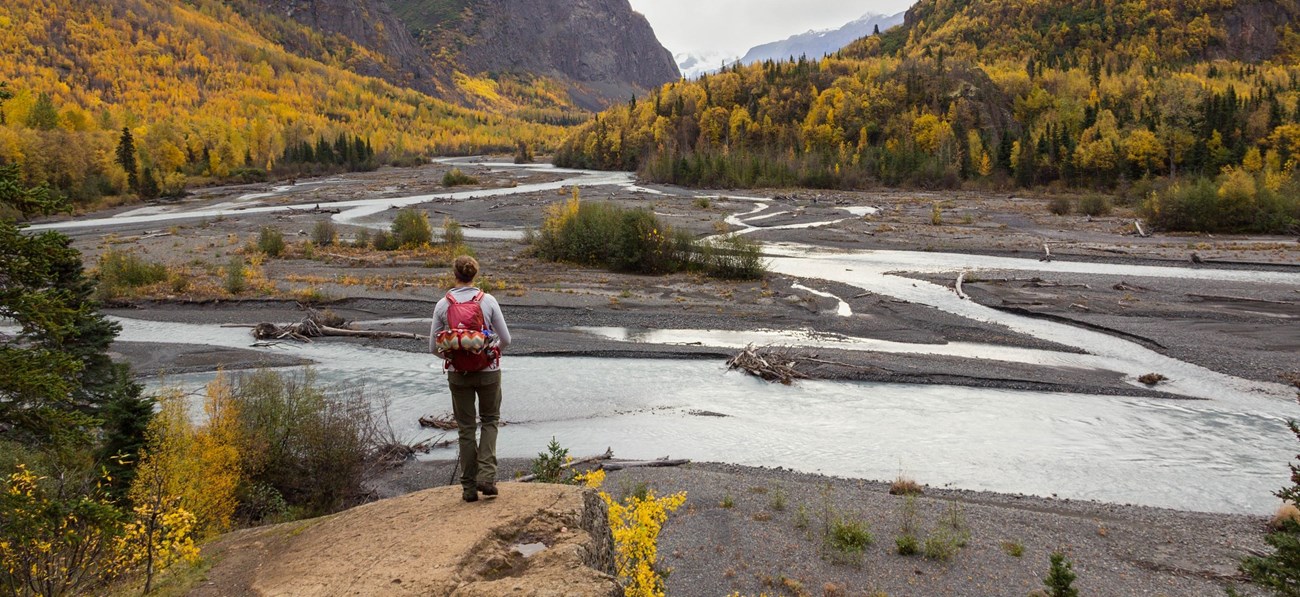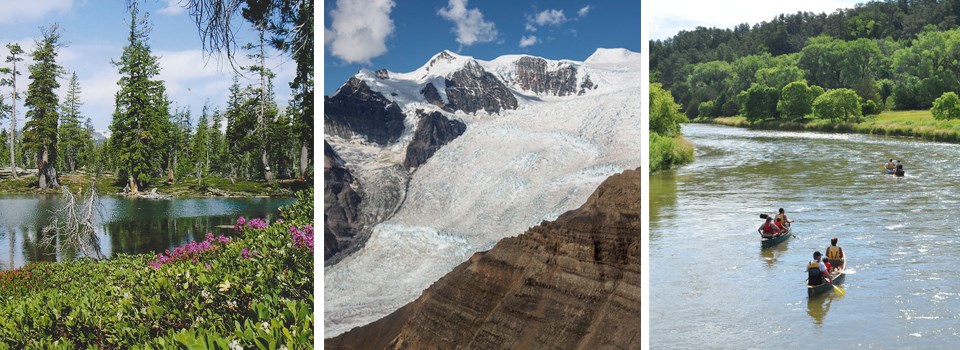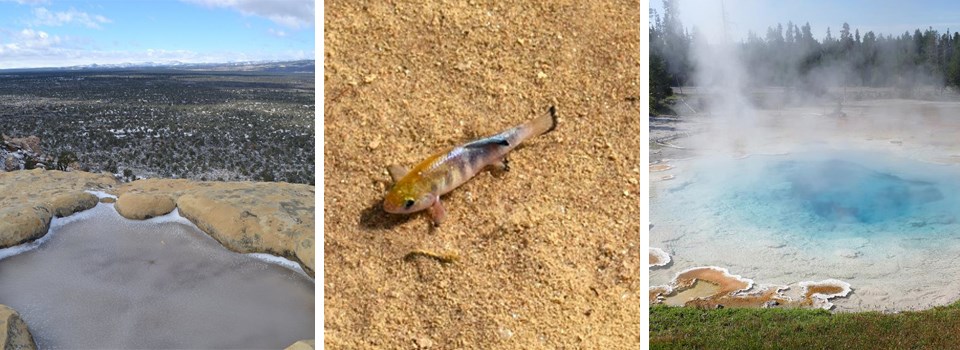Everything on Earth uses water; without it, humans, animals, and plants would face big challenges. Water that you get from your campsite spigot to drink, or to fill your water bottle may come from groundwater that is hundreds or even thousands of years old. The river that flows by while you hike provides essential habitat for wildlife and fish, and the ocean where you swim is home to millions of different species.
In order to protect water, we need to understand it.

NPS Photo
There are many different aspects of water that come into play when trying to understand water.
- The way it moves throughout the water cycle and the environment
-
Whether the water is clean or possibly polluted, and
-
How humans choose to manage that water, by its quantity and/or quality
Types of Water
Water occurs in many forms; precipitation (rain, fog and snow), streams, rivers, ponds, lakes, snow pack, permafrost, glaciers, soil water (moisture), and groundwater. But all this water can be categorized into two types: Surface water and groundwater. And although these types of water may function differently, they ultimately feed into each other. Learn more about the water cycle.
Surface Water:
This is water that can be seen on the surface such as rivers, streams, lakes, ponds, glaciers or wetlands. Surface water interacts with many different factors in the environment and as such can become contaminated or pick up different pollutants along the way. Read more about water quality.

From left to right: NPS Photo, NPS Photo/ J. Frank, NPS Photo
Groundwater:
Groundwater is water underneath the earth's surface that fills the cracks and voids that occur in the soil and bedrock. Groundwater supplies springs and provides base flow to rivers and streams as well as supporting wetlands. It is especially important in the west where water is scarce. Learn more about Groundwater.
Groundwater is stored in Aquifers, and may flow back to the surface as seeps or springs. Groundwater may also flow to the surface to create Tinajas or Anchialine pools.

NPS Photos
Hydrology
In short, hydrology is the study of the occurrence and movement of water in the environment. Water comes in many forms and frequently changes and moves throughout the environment. As water interacts with its surroundings, it can affect habitats and resources in different ways.
Hydrology aims to quantify the different forms and rates of movement, to understand how water interacts with the environment, and how these interactions affect humans. Learn more about water in motion.
Last updated: December 14, 2018
